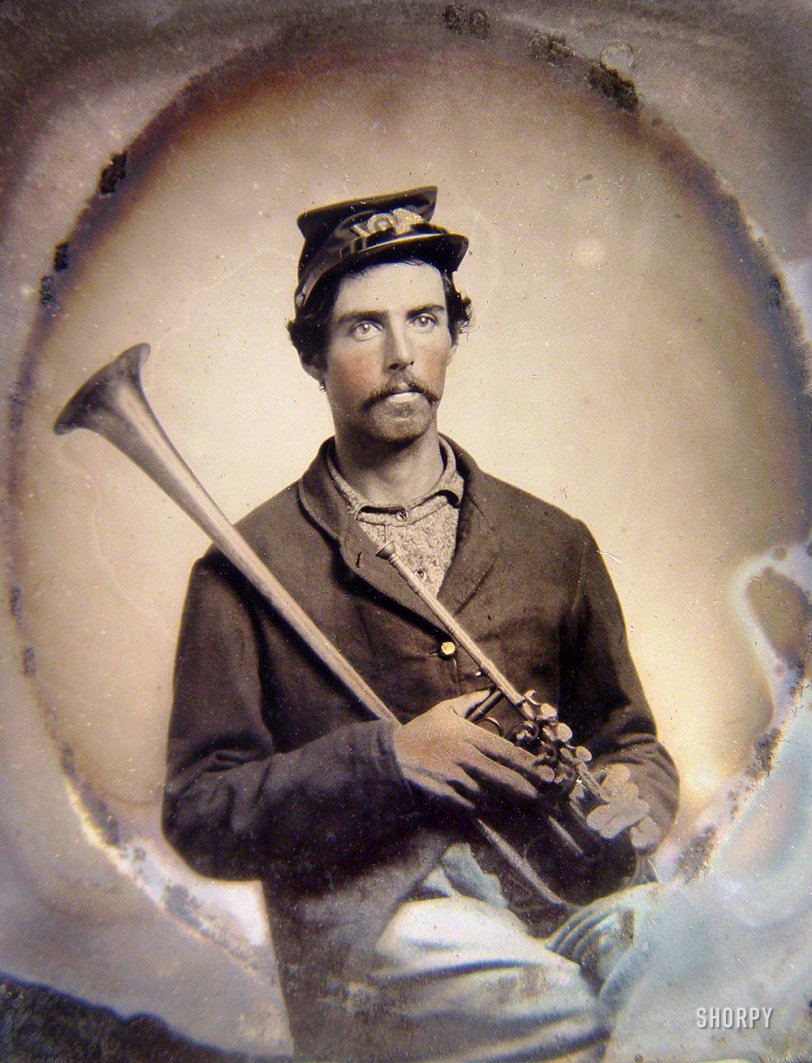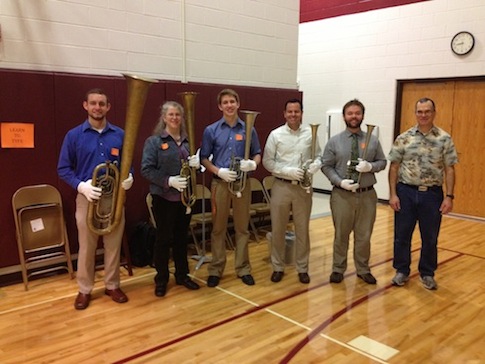


Framed or unframed, desk size to sofa size, printed by us in Arizona and Alabama since 2007. Explore now.
Shorpy is funded by you. Patreon contributors get an ad-free experience.
Learn more.

- Roll your own
- Rugged and real!
- A Charles Purcell - Mama Cass Connection
- Uncle SAAM
- Obfuscation
- One Chocolate Soldier rode away
- Victor Marquis de la Roche
- The Little House Across Way ...
- Vanderbilt Gates
- Vanderbilt Mansion
- You can still see that gate
- Withering heights for me
- So Jim,
- Top Heavy
- Re: Can't Place It.
- Bus ID
- Since you mention it
- The White Pages ?
- Moonlight Tower
- 1907?
- Fire(men) and Water
- Can't Place It
- Can anyone
- Wings
- Where's Claudette and Clark?
- Overbuilt Rolodex
- One song
- Give Me Wings Please!
- PRR
- Pinball Wizards
Printporium
Top Brass: 1860s

Man with a horn, ca. 1861-65. "Soldier in Union infantry uniform with saxhorn." Sixth-plate tintype, hand-colored. Liljenquist Family Collection of Civil War Photographs, Library of Congress. View full size.
The image
The image indeed seems to be reversed, but I see no stud in either ear, just wisps of hair.
Dodsworth
The Dodsworth Saxhorn Band often plays at events at Greenfield Village in Dearborn, MI. Their site has samples of their music on the CD page.
Saxhorn it is.
The instrument is a saxhorn, designed by Adolphe Sax of saxophone fame. They were quite popular with Civil War bands. Wikipedia has all the details and a couple of good photos.
Saxhorn vs. Saxophone
It's an over-the-shoulder saxhorn. The saxhorns are a class of brass instruments with a conical bore and a cup mouthpiece. They are generally claimed to have been invented by Adolphe Sax, who also invented the saxophone. The flugelhorn and modern cornets and upright tubas are all saxhorns.
Saxhorn - ooops
I see it says saxhorn in the caption - I must have misread it as I am a saxophone player. Please see attached a picture of some 160 year old over the shoulder horns. Horns from the John Phillip Sousa Museum.

Indeed a Horn of Sax
I believe this is indeed a Saxhorn (a different beast from a Saxophone though also invented/patented by Adolphe Sax).
Over the shoulder horn.
That is an over the shoulder horn. Saxophones did exist then but they were a reed instrument - not a brass instrument. My wife plays a horn such as this for special events via the John Phillip Sousa Museum where they have a collection of these instruments from the 1850's and 1860's. They were played at the head of a marching column with the bell aimed over the shoulder back to the soldiers behind. There are a range of instrument sizes (bass, tenor, etc) so there might be 4 or 5 horns and a drum at the head of a column providing music to march to. Once in camp they musicians might play for the camp at night and even compete with enemy musicians across the lines for playing best musical selections.
An otherworldly appearance
in no small part enhanced by the removal of an oval framing matte that must have been in place for quite some time.
Far more than the clothes, the expressions we find in the old photos speak volumes about the differences in mindset between then and now. Of course, sitting rigid for several minutes has something to do with it, but even so it seems a serious demeanor was deemed to have greater value then than now.
Typical of a musician
They're always ahead of their times. Our saxhorn wielding warrior seems to have a diamond stud in his right earlobe. Of course I understand that it is really his left ear because of the mirror image nature of the tintype.
























On Shorpy:
Today’s Top 5